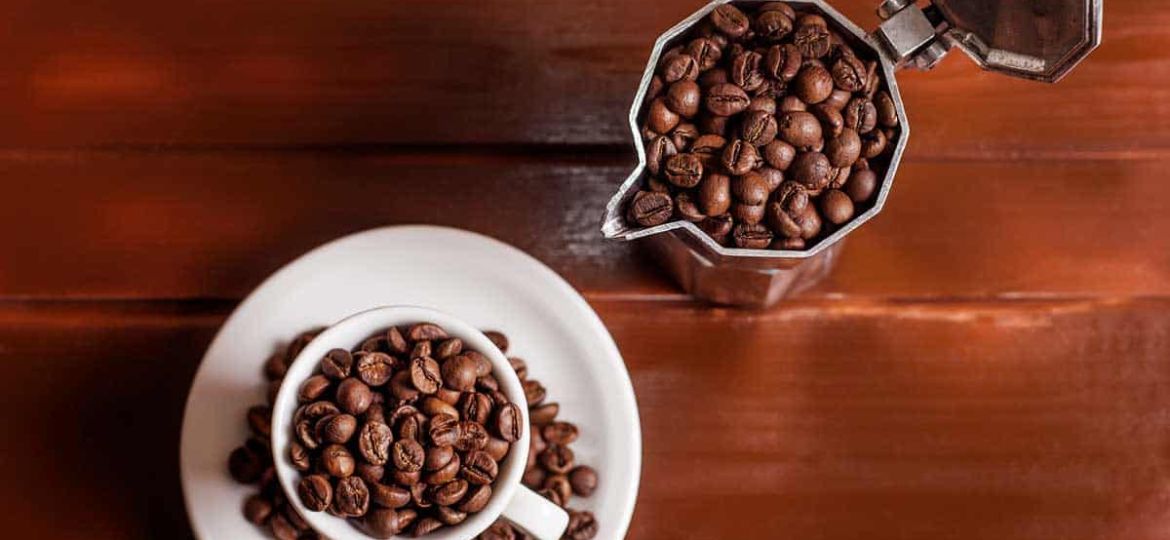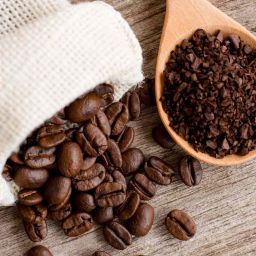
Coffee aficionados often debate the best methods for brewing the perfect cup of coffee, with preferences ranging from the quick and convenient drip coffee maker to the meticulous and revered pour-over. However, one method that has stood the test of time, both for its simplicity and the rich, robust coffee it produces, is percolation.
Selecting the best coffee beans for a percolator isn’t just about flavor; it’s about understanding how the brewing process extracts the coffee’s oils, aromatics, and caffeine. This guide aims to demystify the process and introduce you to the best coffee beans suited for percolation, ensuring every cup you brew is as delightful as the last.
Percolators brew coffee by continuously cycling boiling or near-boiling water through coffee grounds, using gravity and heat to extract flavor.
This method, dating back to the 19th century, has seen a resurgence among coffee enthusiasts who appreciate the percolator’s ability to produce coffee that’s both strong and richly flavored. Unlike other brewing methods that might require specific bean characteristics or grind sizes, percolation is forgiving but still demands quality beans to produce the best result.
Understanding Percolators
History and Resurgence of Percolator Coffee Brewing
The coffee percolator, invented in the early 19th century, represents one of the oldest methods of coffee brewing still in use today. Initially designed to simplify the brewing process, percolators enjoyed widespread popularity until the rise of drip coffee makers in the latter half of the 20th century.
However, in recent years, the percolator has experienced a renaissance among coffee enthusiasts who value the depth of flavor and the ritualistic aspect of the brewing process. This resurgence is not just a nod to nostalgia but a testament to the unique qualities of coffee brewed in this manner.
How Percolators Work and Why the Bean Type Matters
Percolators brew coffee by cycling boiling or near-boiling water through coffee grounds in a repetitive loop. This method differs from other brewing techniques in that it exposes coffee grounds to higher temperatures and prolonged extraction times. The result is a robust and full-bodied coffee, often with a pronounced bitterness that some drinkers find appealing.
The choice of coffee bean, including its roast and grind size, plays a crucial role in mitigating bitterness while enhancing the coffee’s inherent flavors and aromas. Because of the percolator’s intense extraction process, beans that are too finely ground or overly light in roast may yield a brew that’s too bitter or acidic for some palates.
Characteristics of Coffee Beans Ideal for Percolators
Overview of Bean Types (Arabica vs. Robusta)
Coffee beans come in two primary types: Arabica and Robusta. Arabica beans are known for their smooth, complex flavor profiles, with varying degrees of acidity and sweetness, depending on the growing region. Robusta beans, on the other hand, are more robust and bitter, with higher caffeine content and a somewhat harsher flavor. For percolator brewing, Arabica beans are generally preferred for their nuanced flavors that can withstand the brewing process without becoming overly bitter.
Importance of Roast Type for Percolation
The roast level of coffee beans significantly affects the taste of the brewed coffee. Light roasts offer brighter, more acidic flavors, while dark roasts provide a fuller body with smoky, bitter notes. Medium to dark roasts are typically recommended for percolators, as the brewing method’s high temperature and extended extraction time complement these roast profiles, producing a rich, flavorful cup that isn’t overwhelmed by bitterness.
The Role of Bean Freshness and Grind Size in Percolator Brewing
Freshness is paramount when it comes to coffee beans. For percolators, using beans that are freshly roasted and ground ensures the best flavor extraction. Grind size also matters; a coarse grind is ideal for percolators, as it slows the water’s extraction rate, preventing over-extraction and bitterness that can occur with finer grinds. The combination of fresh, coarsely ground beans with the right roast profile can make all the difference in achieving a balanced, enjoyable cup of coffee from a percolator.
Top Coffee Beans for Percolators
Section Introduction
In the realm of percolator brewing, the choice of coffee beans is paramount. Given the brewing method’s distinctive extraction process, selecting the right beans can dramatically enhance your coffee experience. This section will guide you through the nuances of single-origin beans, blends, and the ideal roast levels, providing insights to help you make informed choices.
Single-Origin Beans
Description and Benefits
Single-origin coffee beans are sourced from a single location, offering unique flavor profiles that reflect their specific terroir. These beans can vary greatly in taste, from the floral and fruity notes of Ethiopian Yirgacheffe to the nutty and chocolatey undertones of Brazilian Santos. Single-origin beans are celebrated for their ability to produce a cup of coffee with distinct and complex flavors, making them a popular choice for those who appreciate the subtleties of coffee tasting.
Best Regions for Percolator Brewing
- Ethiopian Beans: Known for their light and aromatic profiles, Ethiopian beans can offer a delightful complexity that survives the percolator’s robust brewing process.
- Colombian Beans: With a balance of acidity and sweetness, Colombian beans provide a consistently smooth and flavorful cup that’s well-suited to percolation.
- Sumatran Beans: For those who prefer a fuller body and earthier taste, Sumatran beans are an excellent choice, delivering rich flavors that are enhanced by percolation.
Blends
Understanding Blends
Blends combine beans from various origins to create a balanced and consistent flavor profile. The goal of a blend is to highlight the best characteristics of each bean, achieving a harmonious and well-rounded cup. Blends are particularly suited for percolator brewing, as they can offer the complexity of single-origin beans with the added benefit of a balanced taste that mitigates any potential bitterness.
How to Choose the Best Blend for Percolation
When selecting a blend for percolation, consider blends that are designed for a fuller body and richer flavor profile. These will generally fare better in a percolator, delivering a satisfying depth of flavor that complements the brewing method’s characteristics.
Dark Roasts
Why Dark Roasts Work Well
Dark roasts are characterized by their bold, smoky flavors and reduced acidity. The intense flavor profile of dark roasts is a perfect match for the percolator’s brewing style, which naturally emphasizes body and richness. The smoky, chocolatey notes of a dark roast can produce a profoundly satisfying cup of coffee when brewed in a percolator.
Top Dark Roast Beans for Percolators
Look for dark roasts with descriptors like “bold,” “rich,” and “chocolatey.” Beans that have undergone a longer roasting process to develop these flavors are ideal for percolation, providing a robust coffee experience that’s both flavorful and invigorating.
Medium Roasts
The Versatility of Medium Roasts
Medium roasts strike a balance between the bright acidity of light roasts and the intense boldness of dark roasts. They offer a versatile flavor profile that can cater to a wide range of palates, making them a great choice for percolator brewing. Medium roasts can reveal a spectrum of flavors, from fruity and floral to nutty and chocolatey, depending on the bean’s origin.
Recommendations for Medium Roast Beans
For those using a percolator, medium roasts from Central America (such as Guatemala and Costa Rica) or the Pacific Islands (like Papua New Guinea) can offer an exceptional coffee experience. These regions produce beans that balance acidity and body beautifully, resulting in a cup that’s both nuanced and satisfying when brewed in a percolator.
How to Choose the Right Beans for Your Taste
Choosing the perfect coffee beans for your percolator involves understanding your taste preferences, experimenting with different beans, and recognizing the impact that different beans have on the flavor profile and caffeine content of your brew. Here’s how to embark on this flavorful journey:
Tips on Experimenting with Different Beans
- Start with Sample Packs: Many roasters offer sample packs that include a variety of beans or blends. Starting with these can give you a broad taste spectrum without committing to a large quantity of one type.
- Vary One Variable at a Time: When testing different beans, change only one variable at a time (e.g., bean type, roast level) while keeping others constant (e.g., grind size, brewing time) to clearly understand what influences the taste.
- Keep a Coffee Journal: Documenting your brewing experiments, including bean type, roast, grind size, and your impressions of the taste, can help you refine your preferences and replicate successful brews.
Understanding Your Flavor Preferences
- Identify Preferred Taste Notes: Do you lean towards coffee with fruity, floral, chocolatey, or nutty notes? Understanding the flavor profiles you enjoy can guide your selection of beans.
- Consider Acidity and Body: Some coffee drinkers prefer a bright, acidic coffee, while others enjoy a full-bodied cup with a heavier mouthfeel. Knowing where your preference lies can help in choosing the right roast and origin.
- Balance vs. Complexity: Determine if you prefer a balanced, smooth coffee or one that offers complex, unique flavors. Blends tend to offer balance, while single-origin beans can provide complexity.
The Impact of Bean Choice on Caffeine Content and Flavor Profile
- Caffeine Sensitivity: If caffeine content is a concern, remember that the type of bean (Arabica vs. Robusta) and roast level can influence caffeine levels. Arabica beans and darker roasts typically have less caffeine.
- Flavor Profile Matching: Match the bean’s flavor profile with the characteristics that percolators enhance, such as body and richness. This matching ensures that the brewing method complements the beans’ natural flavors.
Conclusion
Finding the best coffee beans for your percolator is a personal journey, one that blends science with artistry. It’s about understanding the nuances of coffee brewing and respecting the unique characteristics that different beans bring to your cup.
By experimenting with various beans and paying close attention to your taste preferences, you can discover a world of flavors that enhance your coffee experience. Remember, the perfect bean for your percolator is out there; it’s just waiting for you to uncover it. Embrace the process, and let each cup be a step closer to your ideal brew.









